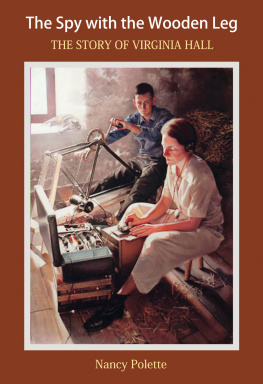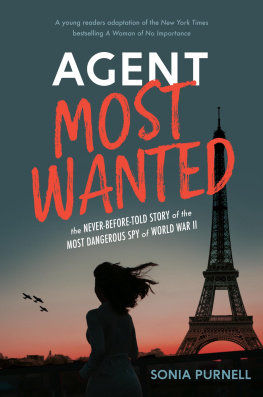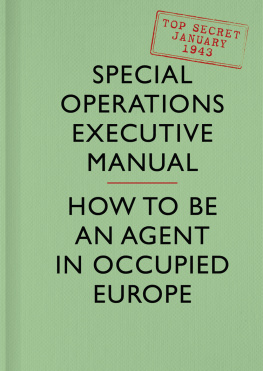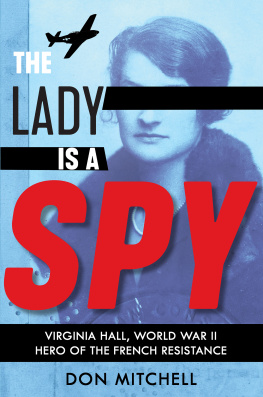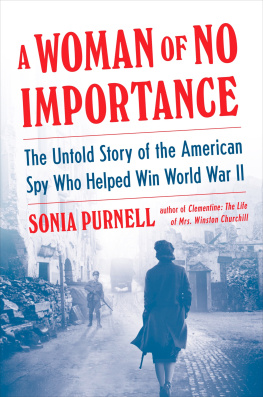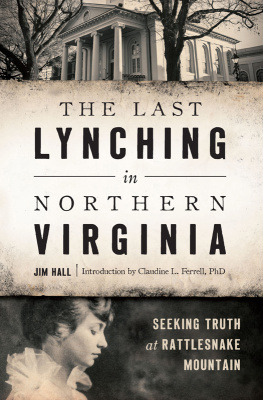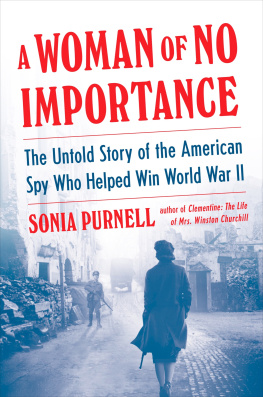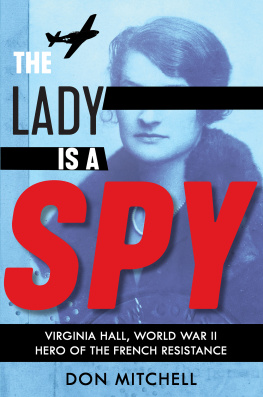
CONTENTS

Gina Minguillan Gillis
(19652015)
and
Liza Minguillan Beyer
(19652015)


During her World War II service, Virginia Hall was known by a number of aliases, or cover names, to protect her true identity. This is a common practice in the field of espionage. Her colleagues in British intelligence (the Special Operations Executive, or the SOE), US intelligence (the Office of Strategic Services, or the OSS), and the French Resistance would know her by a variety of names, including: Diane, Marie Monin, Philomne, Brigitte Le Contre, Rene, Marcelle Montagne, Nicolas, Germaine, Anna Mller, and Camille. To avoid confusion, I have minimized references to Virginia Halls aliases and have relied primarily on her true name to tell her story.

O n a March evening in 1944, a boat pulled out of an English harbor, heading across the English Channel to Nazi-occupied France. On board was Virginia Hall, an American from a prominent Baltimore, Maryland, family and only days away from her thirty-eighth birthday. She was placing her life at great risk by returning to France, where Virginia was well known as a spy. One British intelligence officer would later say of her, From my point of view and that of many of my colleagues, Virginia Hall can be considered the greatest wartime agent.
As the boat left the English harbor, Virginia and her colleaguecode-named Aramiswent on deck, where they observed three British patrol vessels following them. The boats tested their machine guns and antiaircraft guns on rocks laying outside the harbora sobering reminder that they were about to enter a war zone. After several hours of uncomfortable sleep, they were rousted out of their bunks at around 3:00 a.m. to prepare for their landing in France.
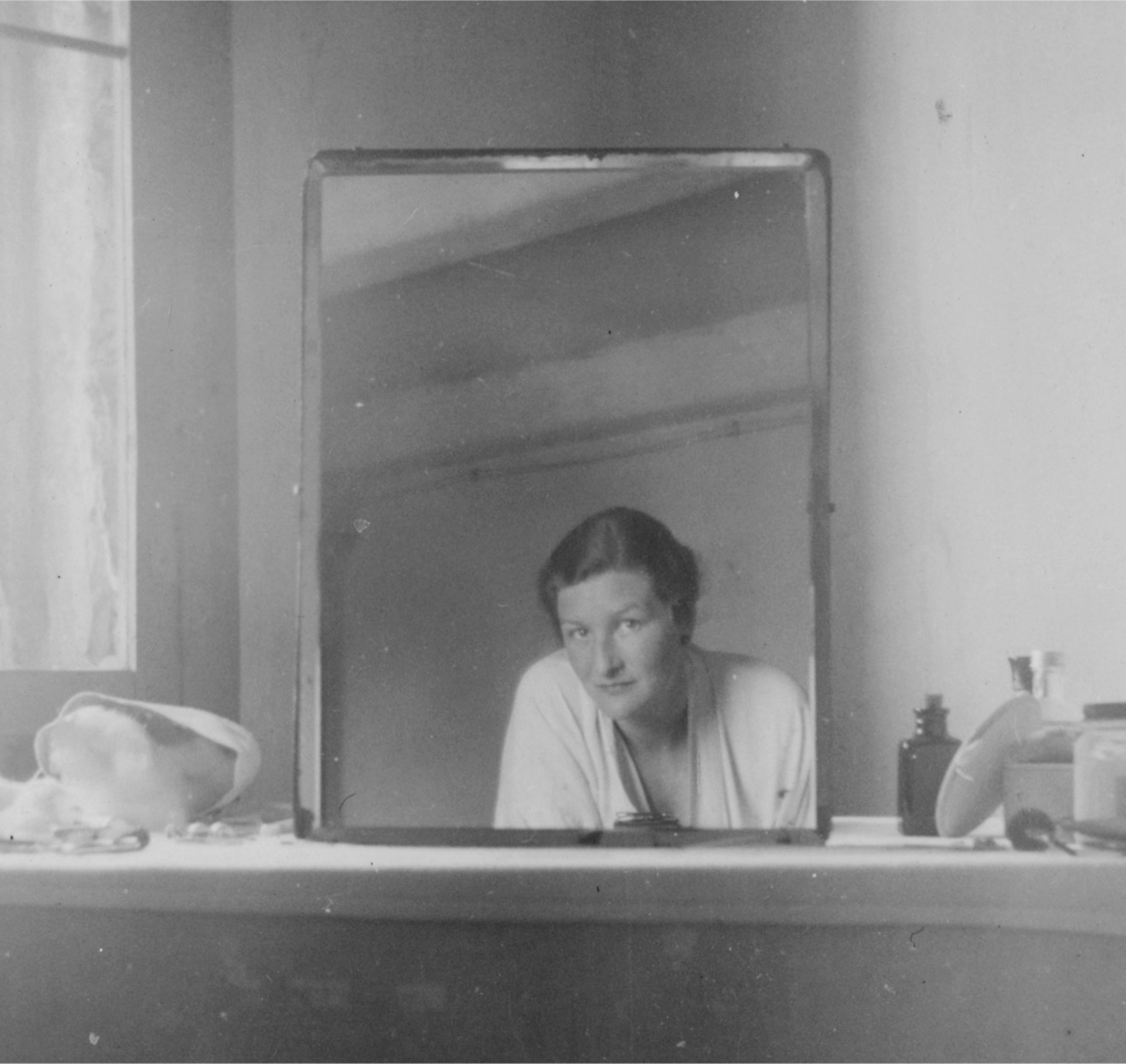
Self portrait of Virginia in a mirror.
Fortunately, the sea was calm as two small boats were lowered over the side of the vessel. Each boat contained four menthree to row and a British officer armed with a Thompson submachine gunto accompany Virginia and Aramis to shore. They rowed in silence. They could barely see the outline of the cliffs in the darkness as they approached the beach. Finally, they heard the crunch of stones as the boats slid onto the shore of Brittany in the early morning. Everyone quickly jumped out of the boats, where two men and two women waited to assist them. The bags were gathered up, and the party walked uphill on cobblestones.
As her adventure began, Virginia was determined to meet the challenges she knew were waiting for her.
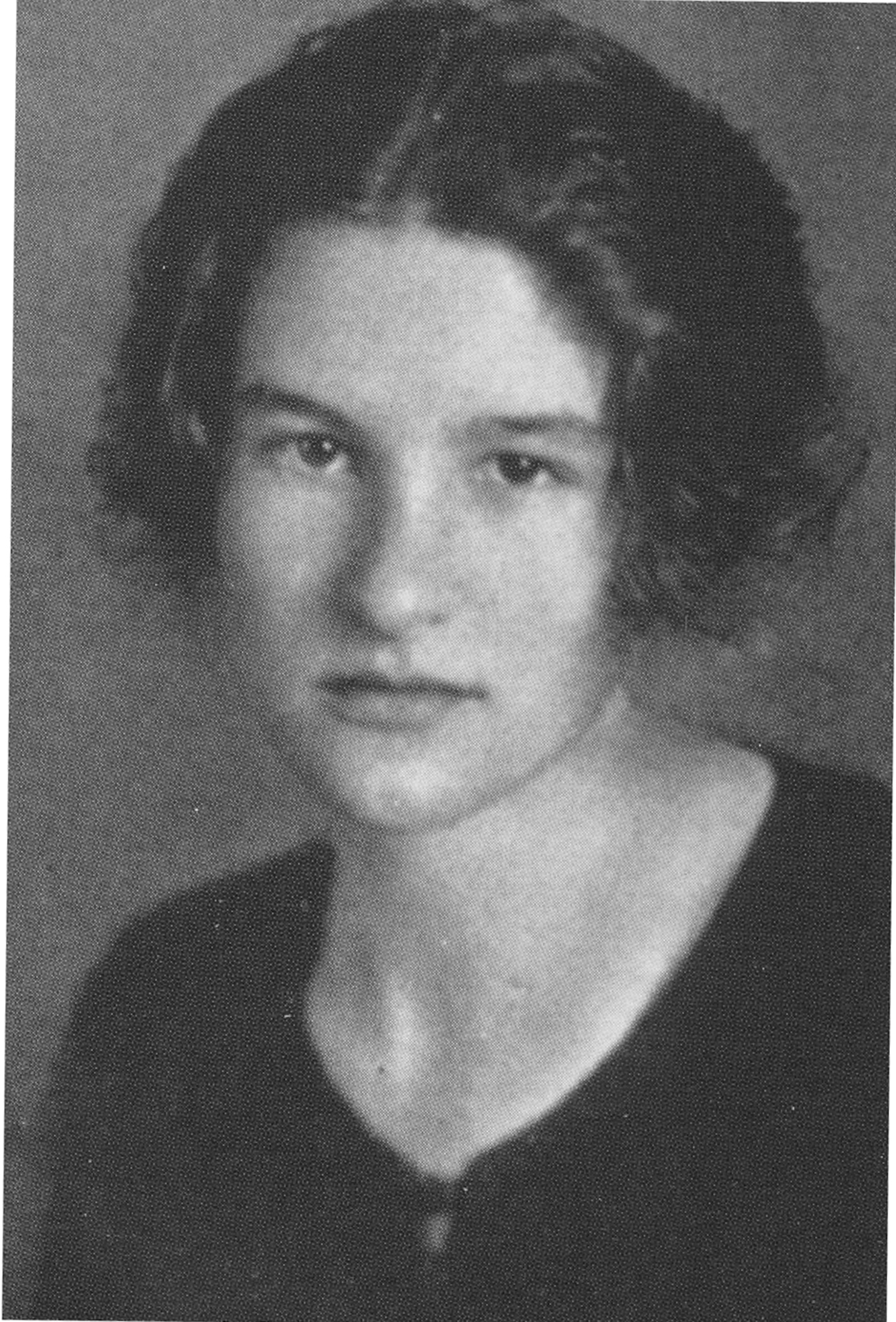


V irginia Hall was born in Baltimore, Maryland, on April 6, 1906. Her grandfather, John W. Hall, stowed away on one of his fathers clipper ships when he was nine years old. John would later become the master of a ship engaged with the China trade. He would go on to make his fortune in Baltimore as president of the Gas and Electric Company and president of the First National Bank. Johns son, Edwin Ned Lee Hall, was Virginias father. He had banking interests and owned several movie houses in Baltimore. Ned married his secretary, Barbara Virginia Hammel.
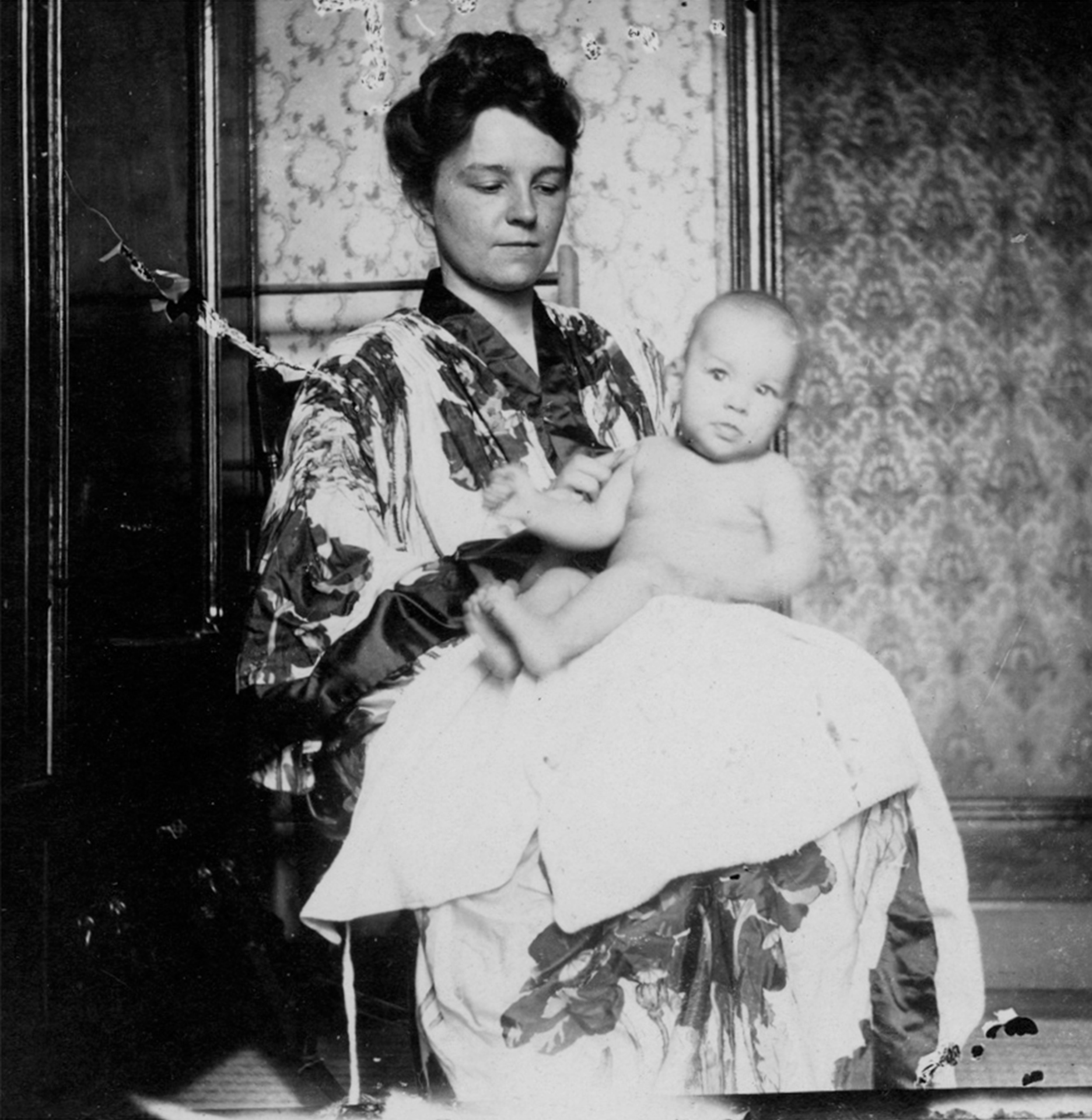
Baby Virginia in her mothers lap.
Virginias only sibling was her brother, John, who was four years older. Family lore had it that in their childhood years, John mispronounced Virginias name, calling her Dindy, and the nickname stuck. They were a close-knit family.

Young Virginia and her brother, John, with flowers.
The Halls had an apartment in Baltimore, but Edwin and Barbara purchased a country home outside of BaltimoreBox Horn Farmin Parkton, Maryland. Their house in the country was a welcome respite from the city, particularly in the hot summer months. The farmhouse had plumbing but no central heating until after World War II, so it was most comfortable during the spring and summer. There were woodstoves and fireplaces to provide warmth during cold weather.
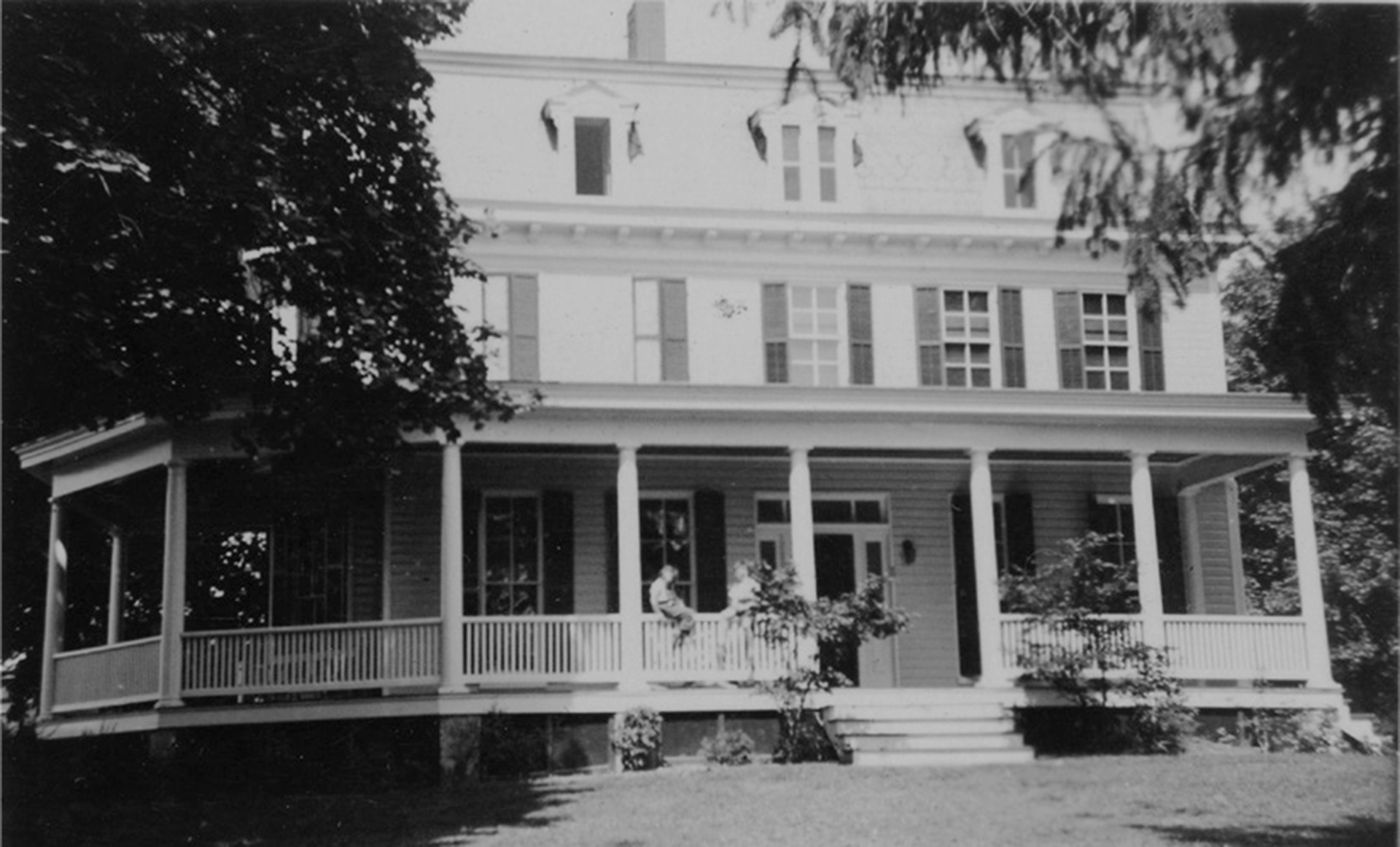
The family home at Box Horn Farm.
In order to satisfy the childrens curiosity, the homes library was filled with books. The farm had over one hundred acres and was looked after by a tenant farmer who worked the property for the family. A train, called the Parkton Local, ran regularly between Baltimore and Parkton, and it made the commute easy for Edwin to attend to his business interests in Baltimore. During some parts of the school year, Virginia would also take the commuter train from the farm to her school in Baltimore.
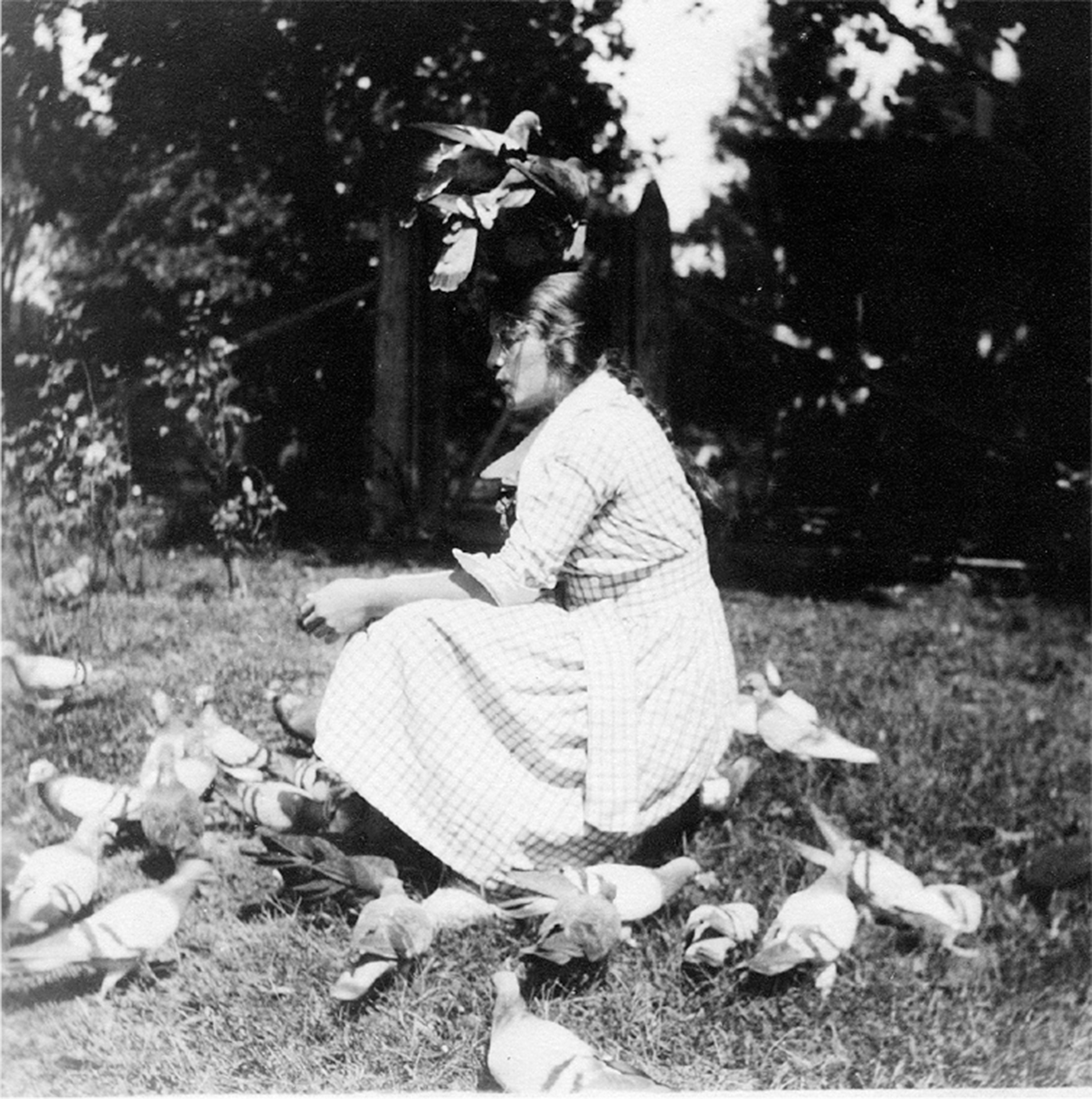
Virginia with pigeons.
Virginia and John loved spending time on the farm. There were hills, orchards, and woods to play in, and the two learned to hunt and fish. The barn was home to horses, goats, chickens, and cows. Handling farm animals would later become valuable to Virginia in ways she could not have imagined during her childhood. Looking back at her time there, Virginia once reminded her niece, Lorna Catling, how important it was to learn everything you can. She remarked that learning to milk the cows for fun turned out to be very handy.
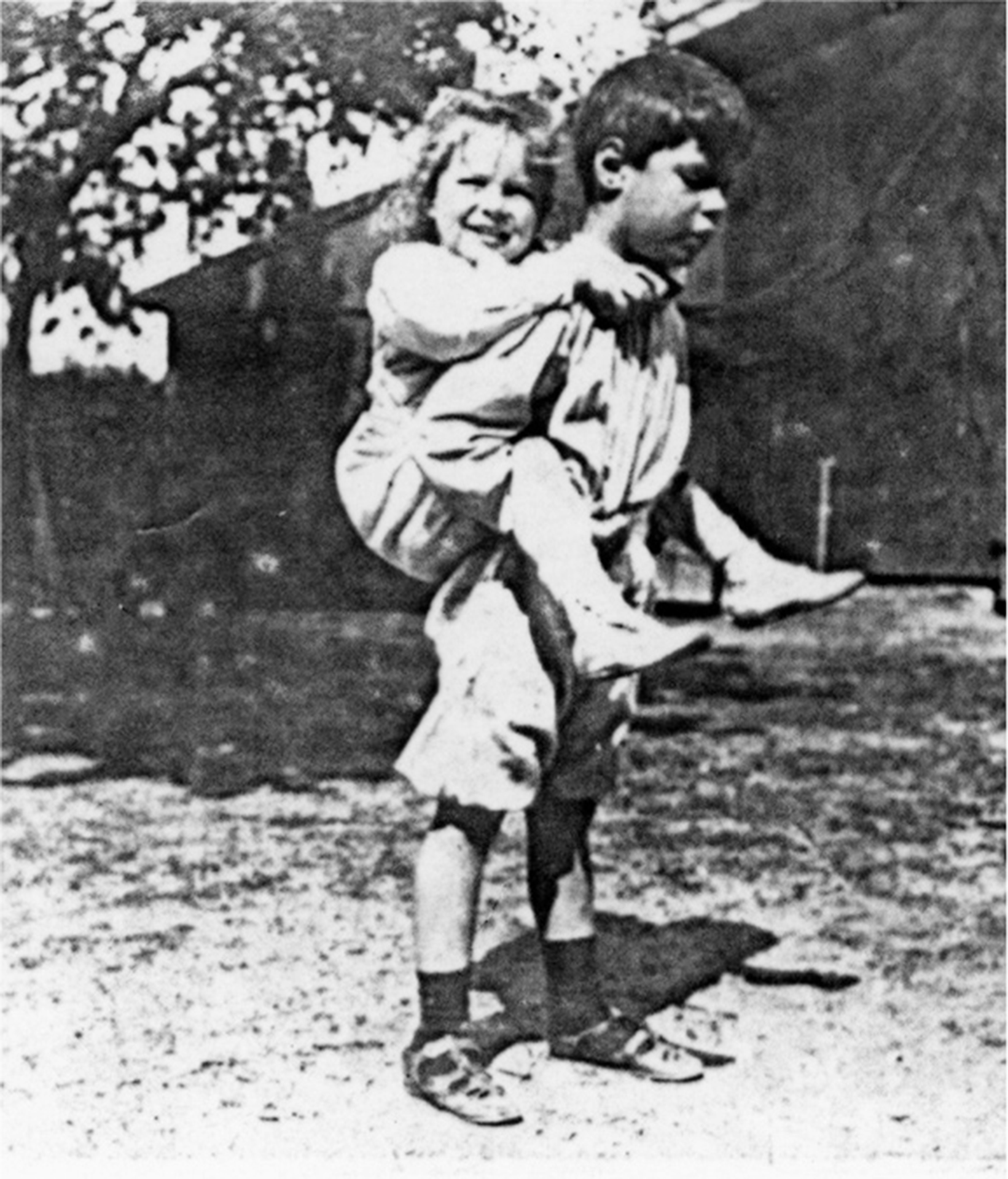
Young Virginia riding piggyback on John.
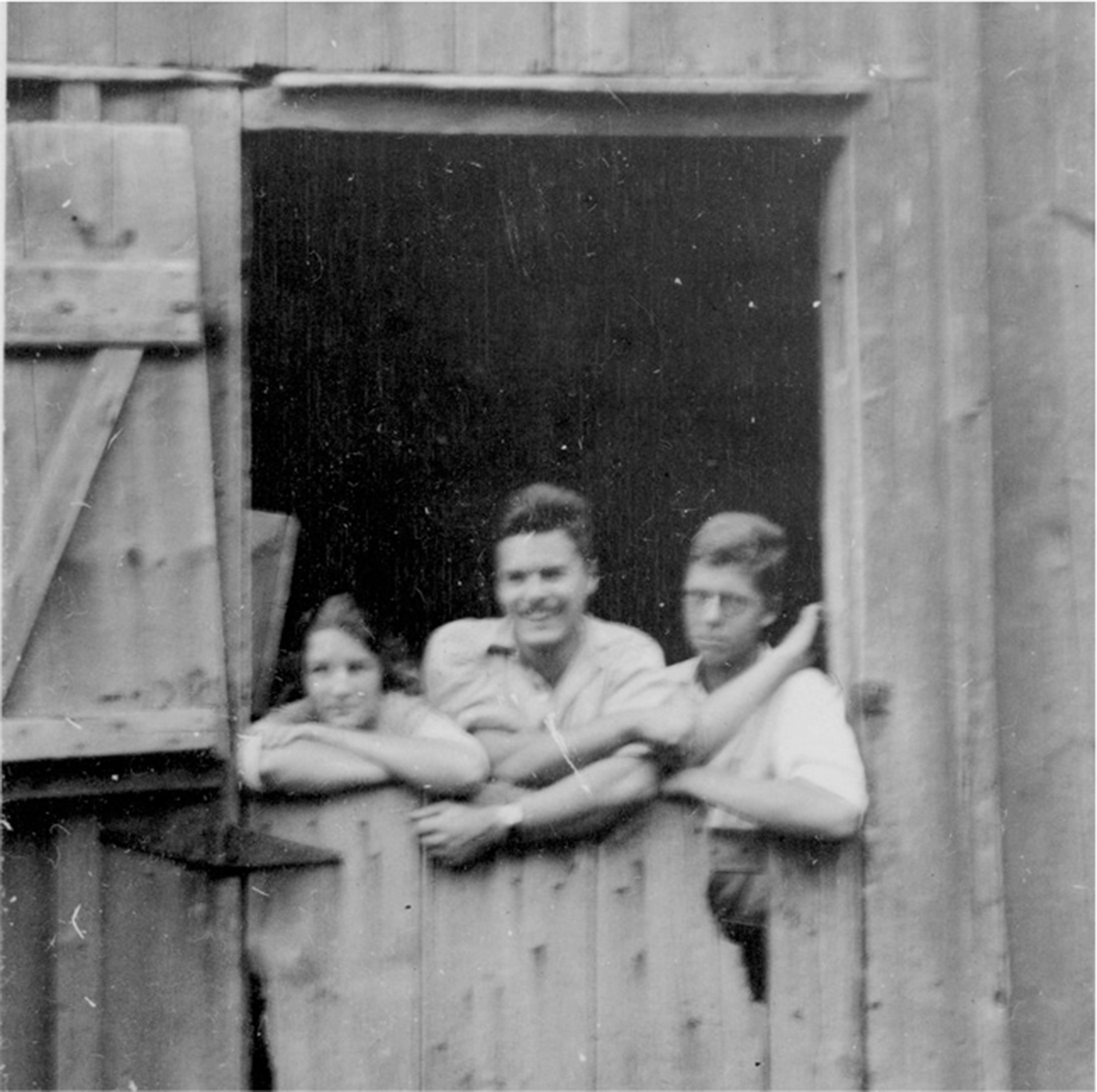
Virginia and John (left and middle) on the farm.
In 1912, six-year-old Virginia Hall began attending the prestigious Roland Park Country School in Baltimore, where she immediately distinguished herself. Virginia loved sports and was an excellent athlete, playing tennis and baseball and going on to become captain of the schools varsity basketball and field hockey teams. She also enjoyed acting in the schools theatrical productionswhere she sometimes portrayed male characters, a necessity in the all-girls school.


